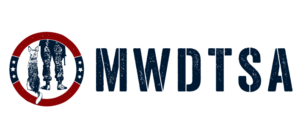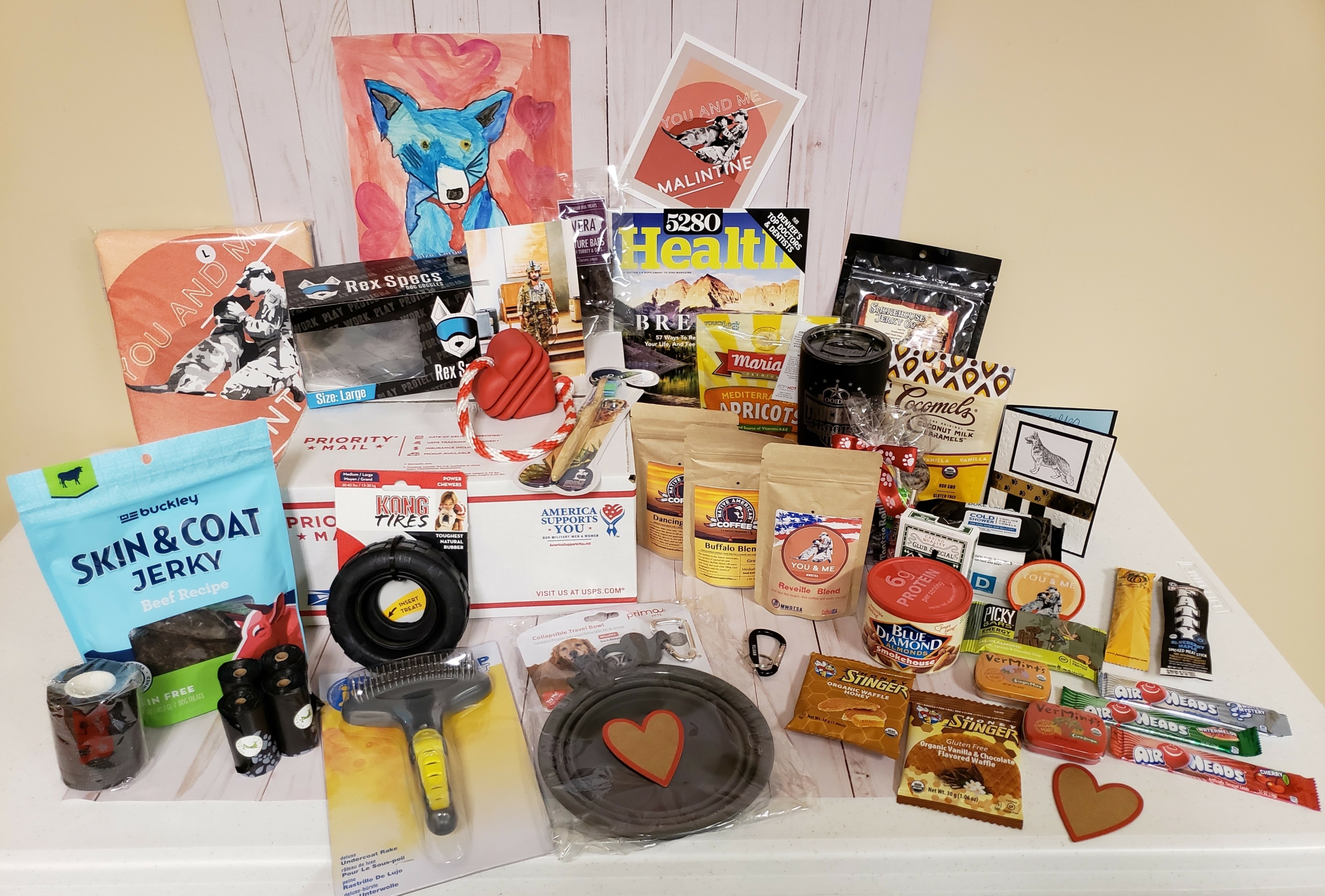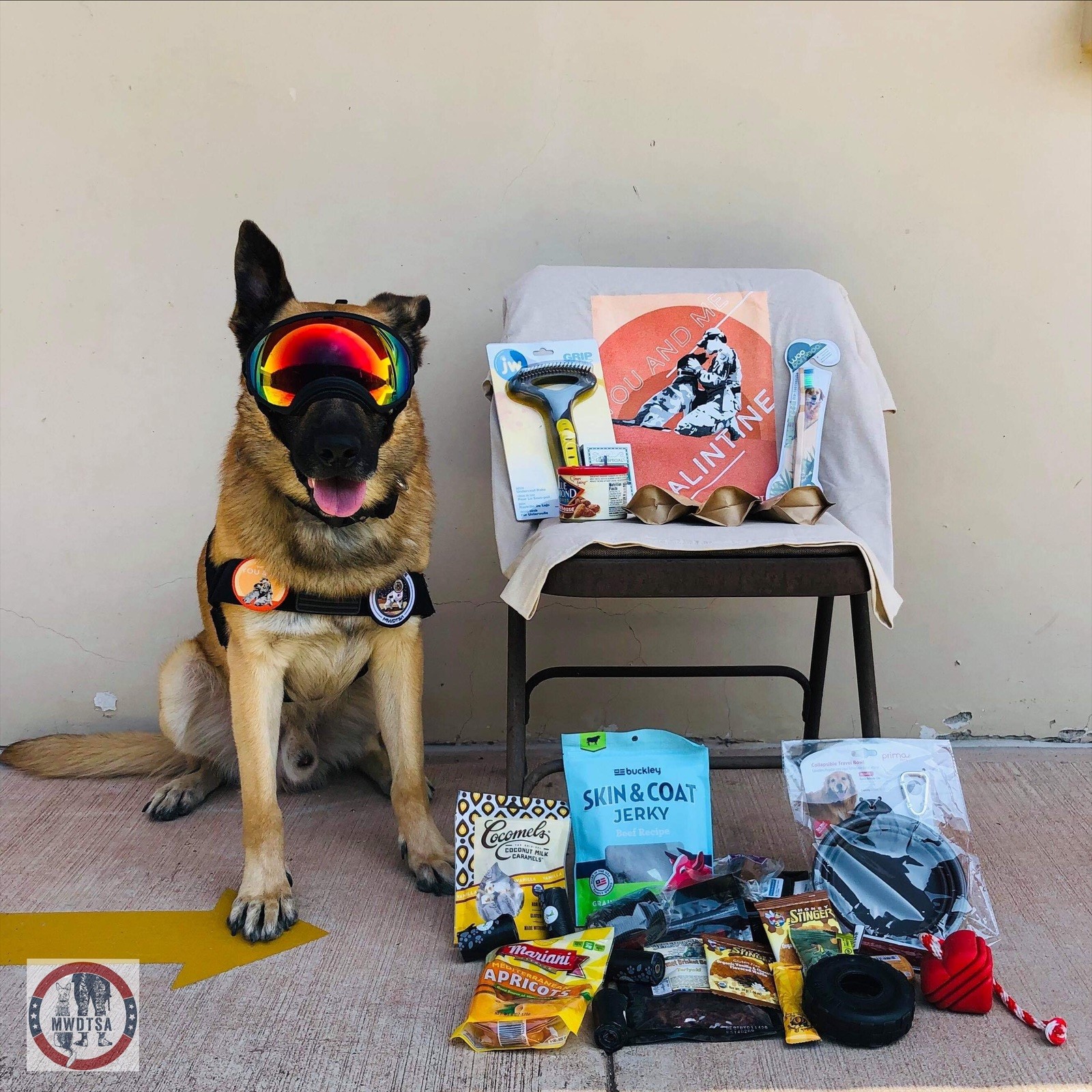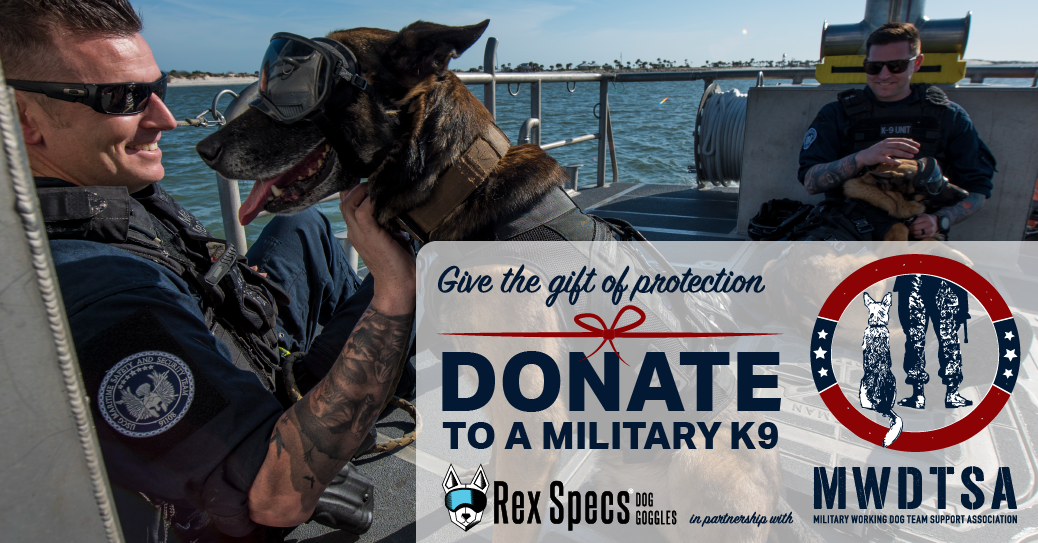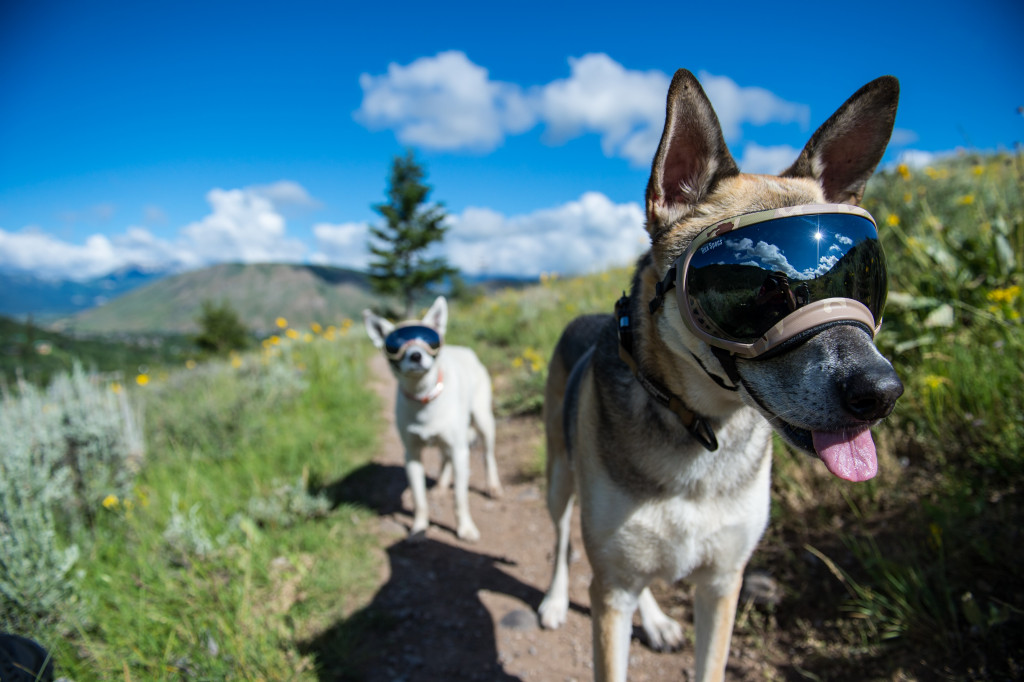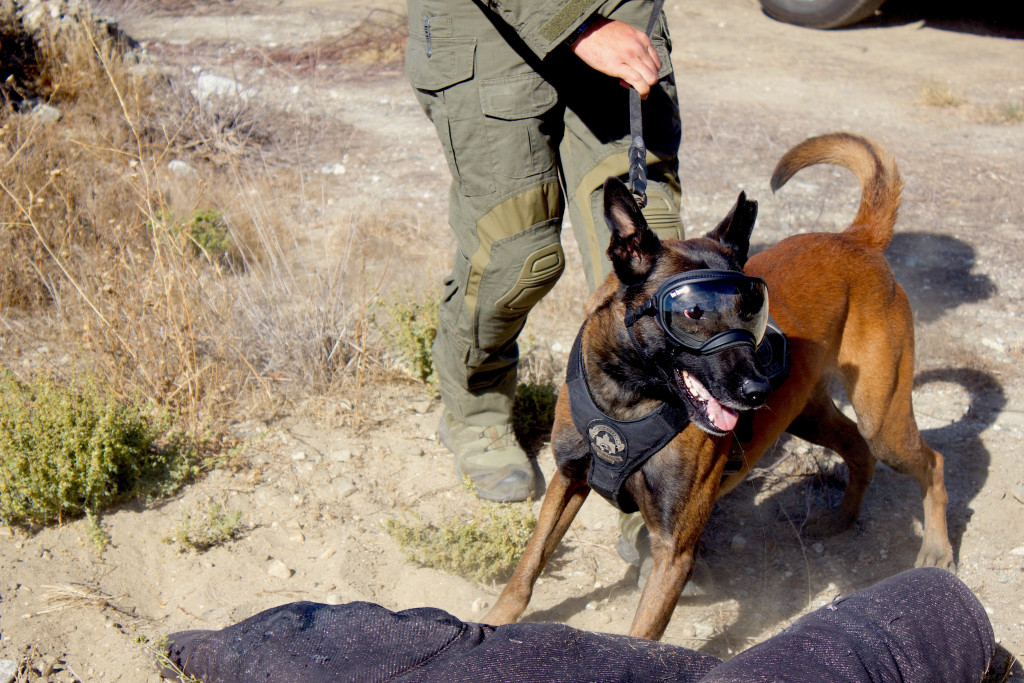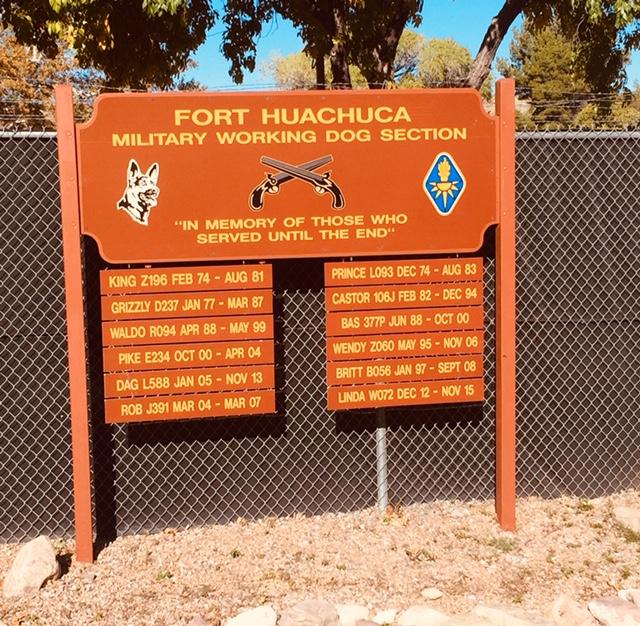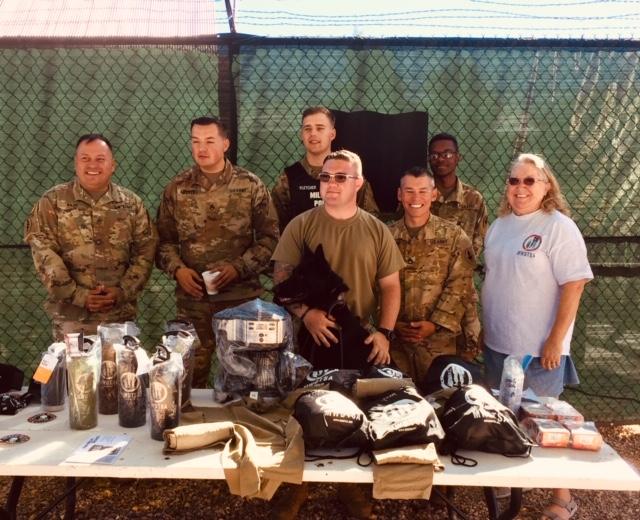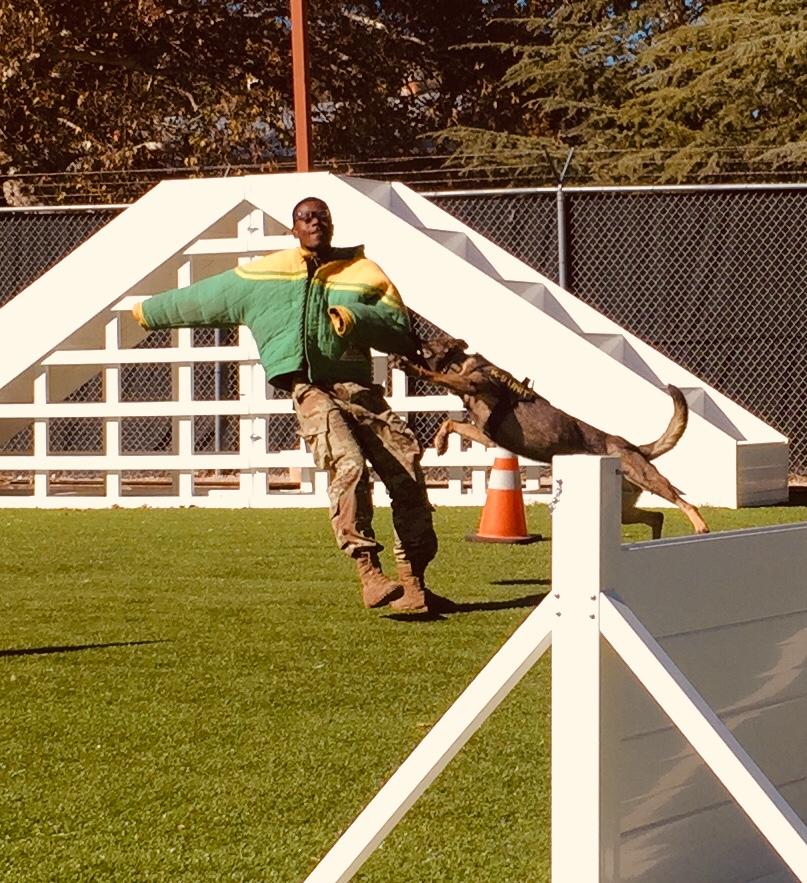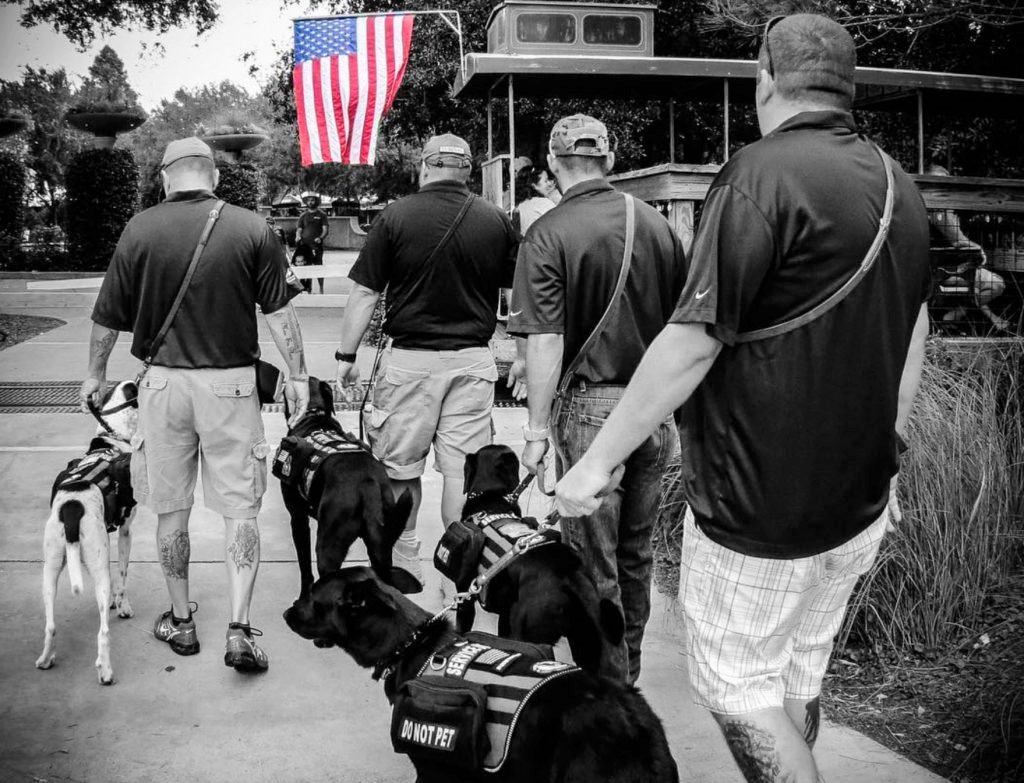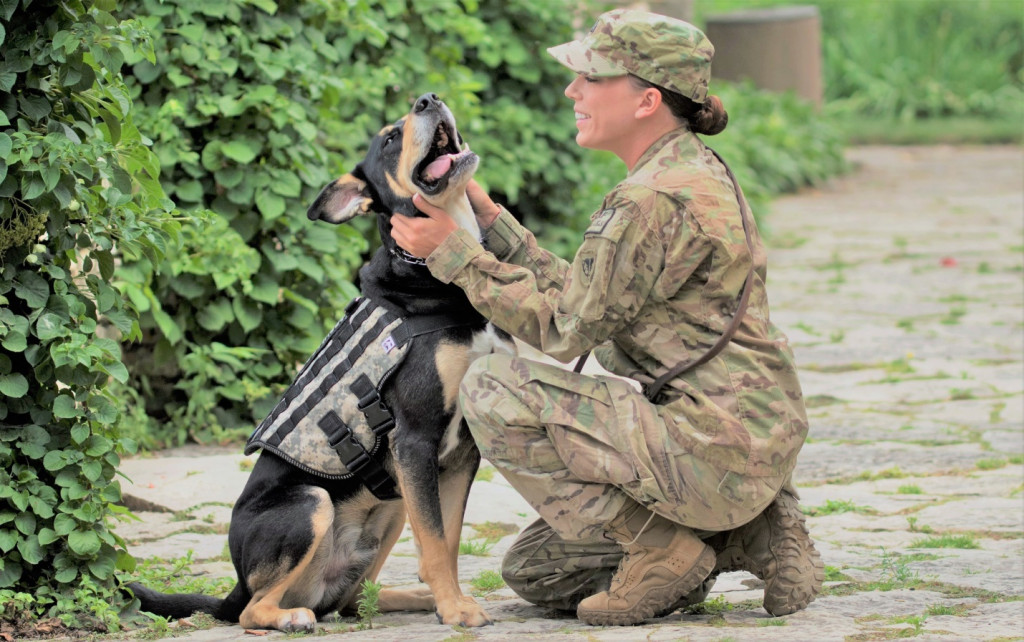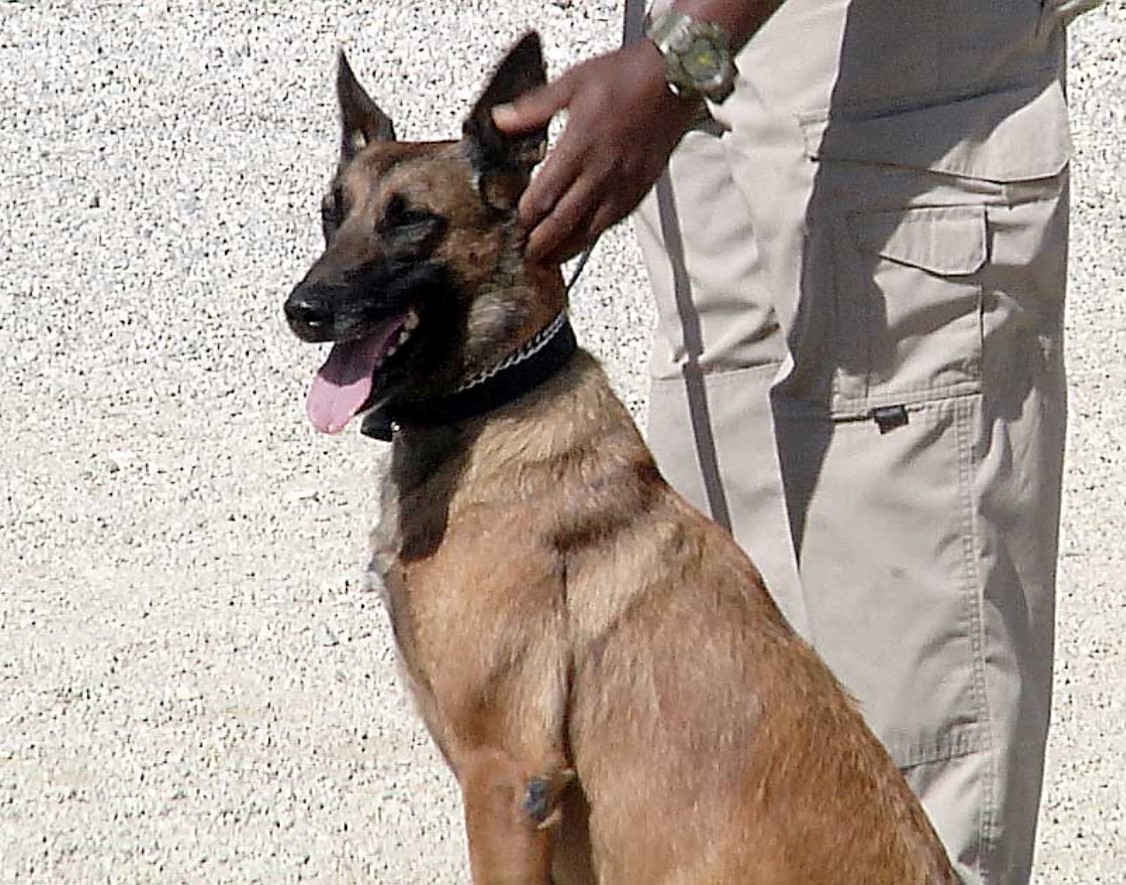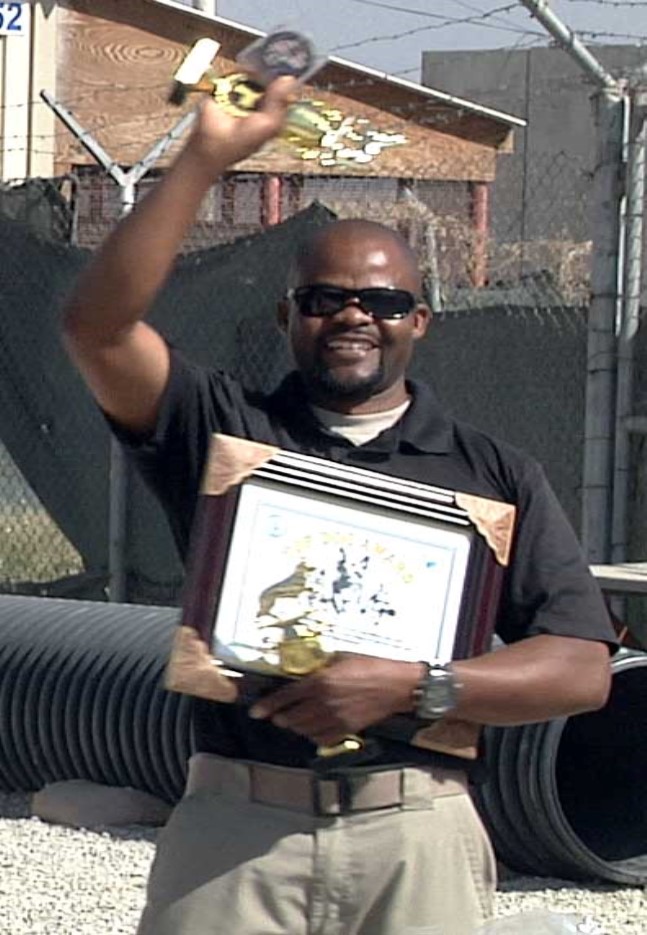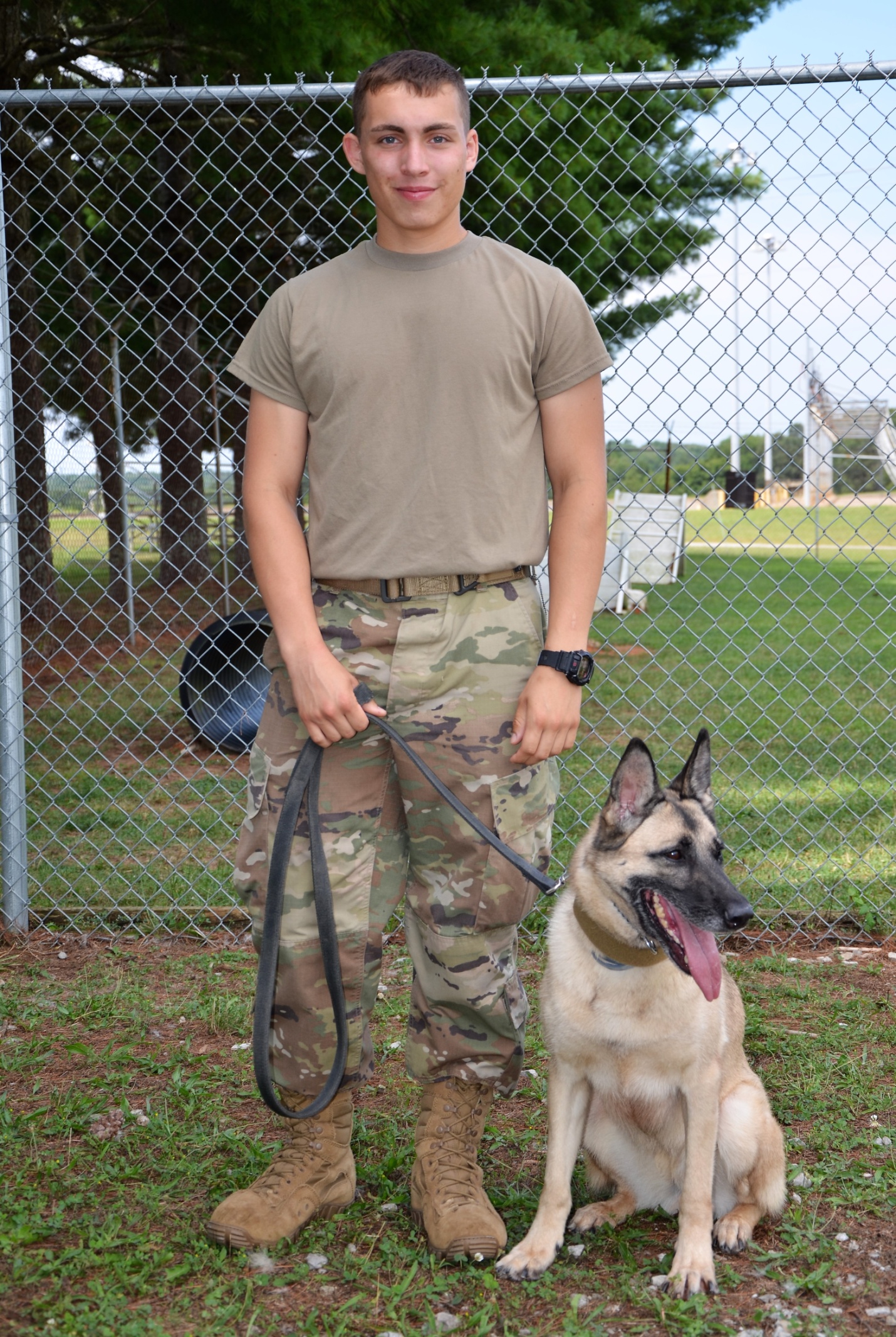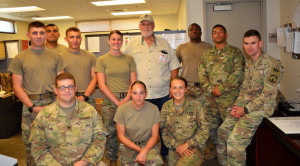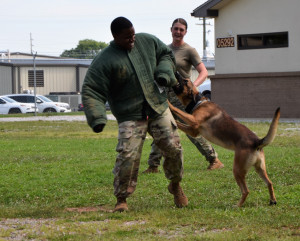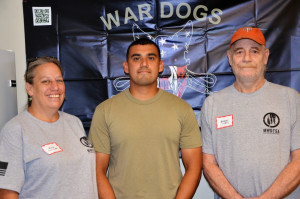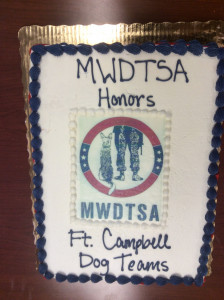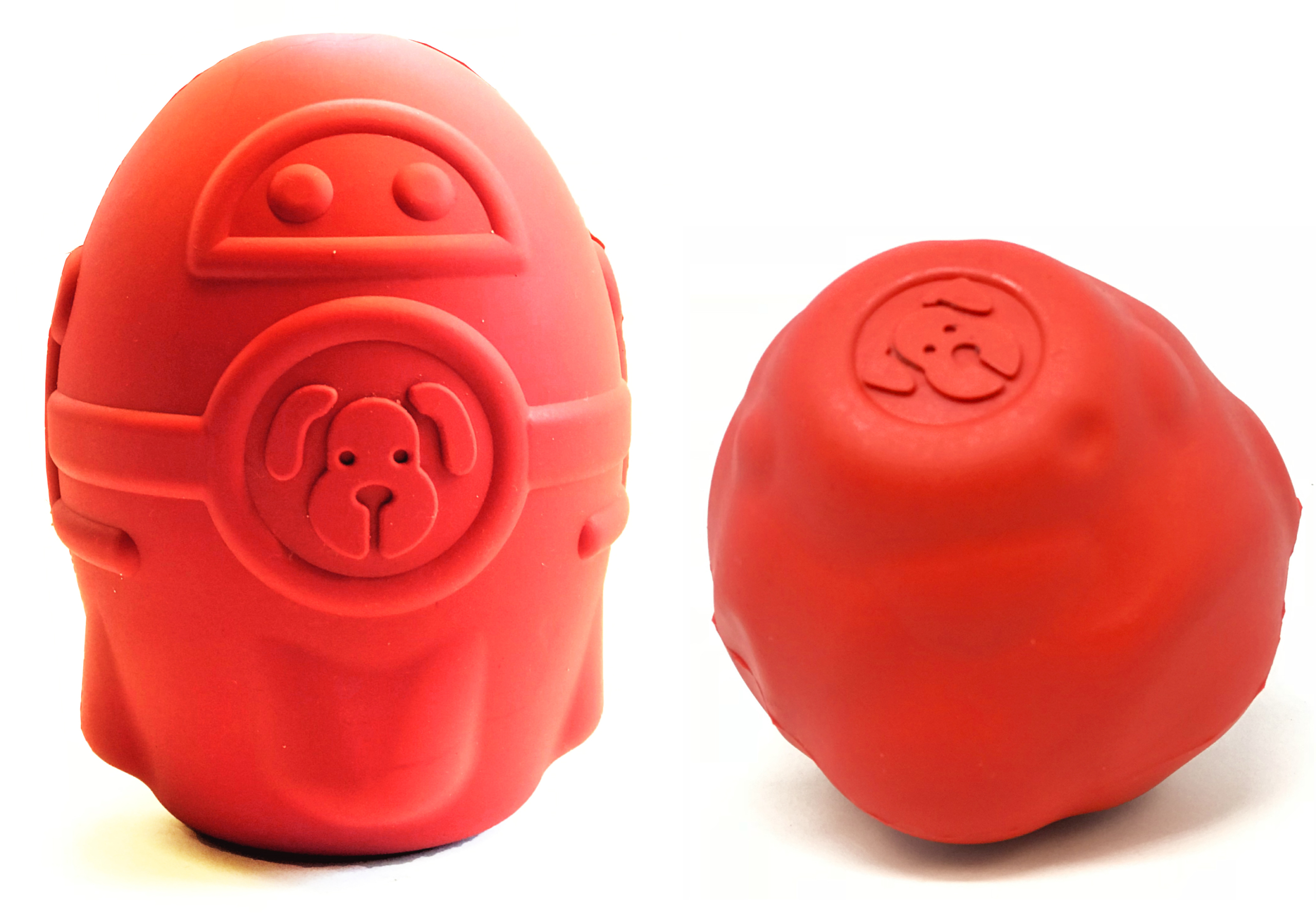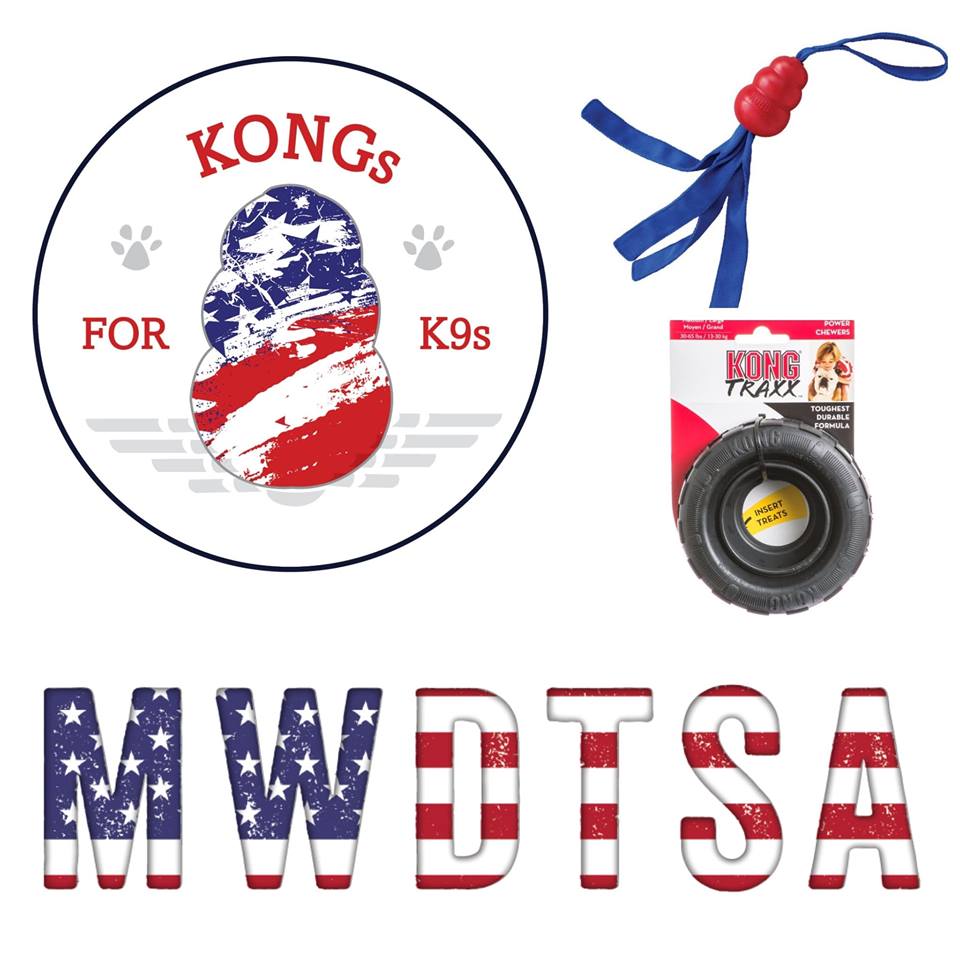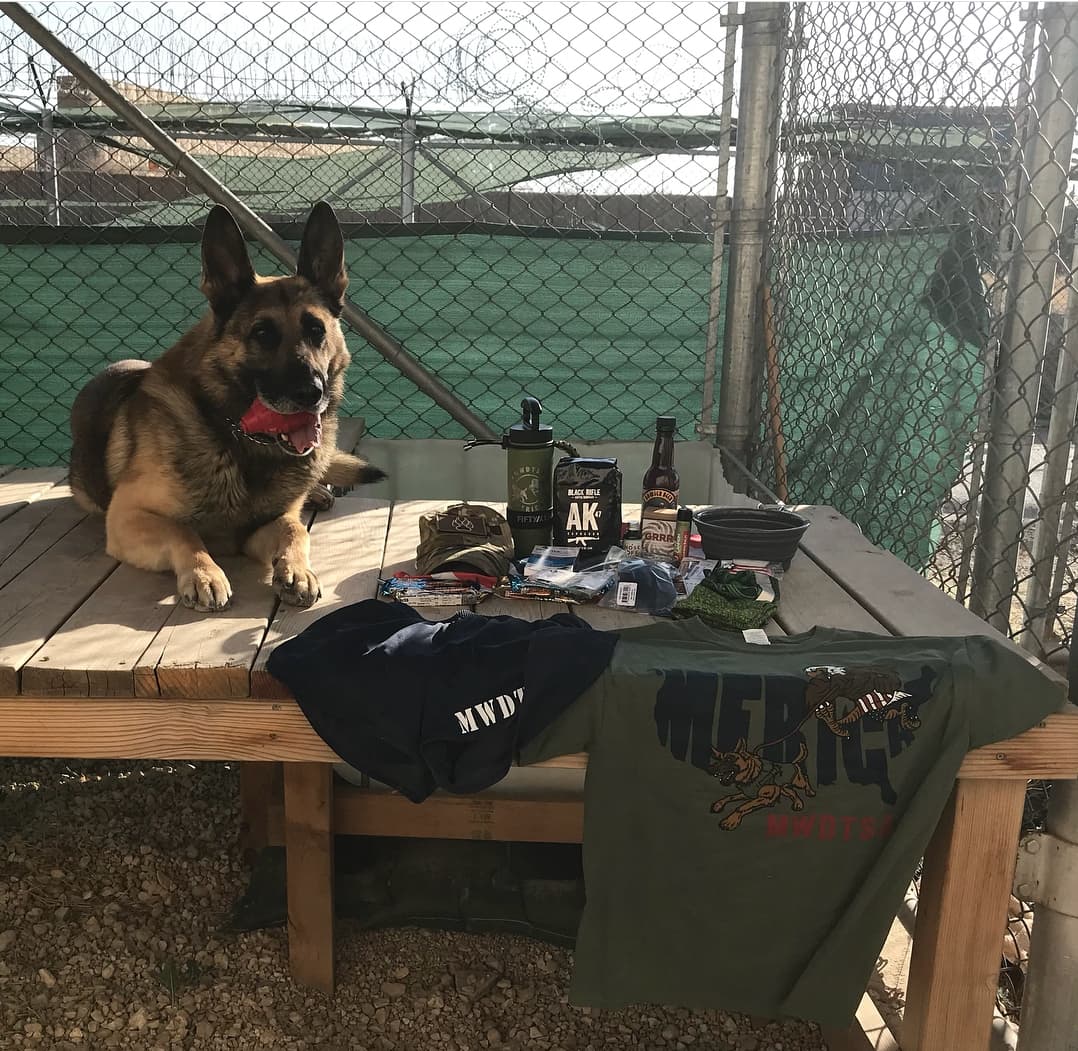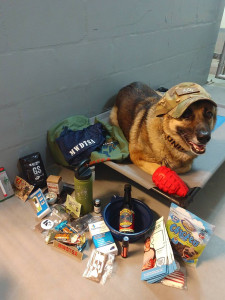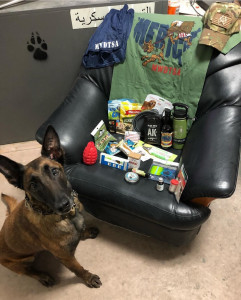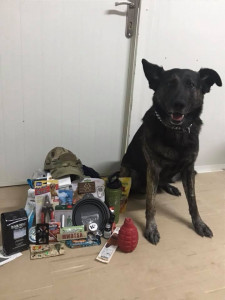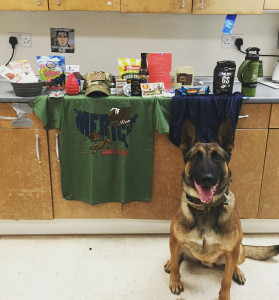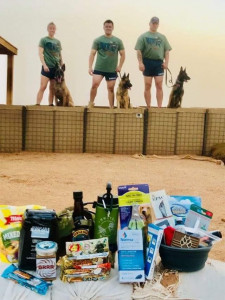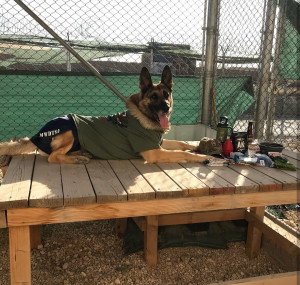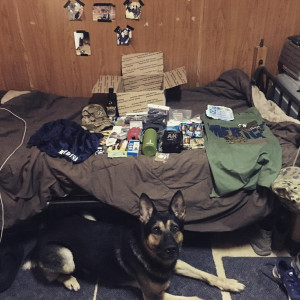If you, a group, or your company would like to support military working dog teams, here are several ways to get involved. Pick something from the following list, or use these ideas as inspiration for a new endeavor. It takes a village to fill our quarterly care packages. We invite you to join us in supporting both ends of the leash.
1) Donate 200 of an item.
We try to make each quarter’s care packages relatively uniform, so that all recipients are getting the same dog toys, snacks, etc. This means we need 200 of any item we’re planning to send. Every quarter, we aim to include made-in-USA jerky, dog treats, human snacks, grooming products, and other supplies. If your company makes a product you think handlers or their dogs might like, let’s talk! If you are able to provide the full quantity of an item, we add you to our sponsor page (https://www.mwdtsa.org/sponsors/). We also highlight your involvement via our social media channels.
2) Provide a bulk-purchase discount.
If you are not able to outright donate 200 of a particular product, consider offering a bulk purchase discount. If MWDTSA can buy your product below wholesale cost, the difference between your discounted and wholesale price is tax-deductible. We provide a donor acknowledgement letter for your tax records.
3) Offer a matching program.
Customers buy one, and you throw in a second—so we end up with two care package items for the price of one.
4) Team together to sponsor a care package item.
Maybe you’re a real estate company or high-tech firm that doesn’t manufacture products, but you’d still like to help fill care packages. MWDTSA can match you with a bulk-purchase discount, enabling your organization’s donation dollars to have more purchase power.
5) Plan a fundraiser.
In the past, volunteers have coordinated golf tournaments, 5Ks, nail trimming events, Chick-fil-A fundraising nights, and other creative activities—all to raise money for MWDTSA care packages. Destination Imagination teams, Scout troops, Bar/Bat Mitzvah candidates, coffee shops, breweries, and others looking for a service opportunity can make a big impact for MWDTSA.
6) Host a toy/treat drive.
If you own a retail store, veterinary clinic, or grooming salon, you can order in one of our wish-list products, place it at the register, and ask clients, “Would you like to add a treat for a military working dog to your purchase today? We’re collecting care package items for dogs deployed in global combat zones.” Customers leave their donation with you, and at the end of the drive, MWDTSA makes arrangements to get the donated products to our packing location.
7) Make an introduction.
Maybe your neighbor’s company produces an amazing snack item. We can equip you to approach your friend with a donation request. Your personal introduction can pave the way for important new partnerships and collaborations.
8) Add MWDTSA as an option on your order form.
If your kids are selling coffee or candy to raise money for their school or sports teams, they probably encounter the word “no” quite a bit. What if they could add this to their spiel: “If you are not a coffee consumer, you can also support our school/team by purchasing coffee to donate to a deployed military working dog handler.”
9) Adopt a care package.
Each care package involves approximately $150 in products and postage. Manufacturers donate many of the items we include. However, every quarter, we need assistance to cover t-shirts, tactical patches, postage, and other items. You can “adopt” a package by making a $75 donation via PayPal to fill these needs. This option includes the following benefits for donors:
- We will include a card in the care package, acknowledging who sponsored the box.
- You can dedicate the box. For example, “We are sending this care package in honor of Joe Sample, who served in World War II.”
This is a fun option for a Scout troop, school group, company, or family that wants to support military working dog teams. For more information, contact president@mwdtsa.org.
10) Collect children’s art.
A colorful painting of a dog provides cheer for handlers. Each quarter, we need at least 200 pieces of children’s art. Contact president@mwdtsa.org for criteria regarding size, subject matter, and medium.
11) Write letters of encouragement.
No one knows about deployments better than veterans who have served in global combat zones. Think back to your time overseas. Are there funny stories you can share? Advice you wish you had known earlier? Poems that boosted your morale? We’re looking for veterans groups who would like to write letters so that every care package we send has a personal communication in it.
12) Join Amazon Smile.
If you regularly shop on Amazon for your business or home, Amazon Smile donates a portion of your purchase price to the nonprofit of your choice. Choose Military Working Dog Team Support Association, and every purchase you make will help support military working dog teams.
13) Visit our Amazon Wish List.
Each quarter, and for special occasions such as National K9 Veterans Day, we maintain a registry of products we plan to include in upcoming care packages. You simply purchase one or more items, and Amazon sends them directly to our packing coordinator. Each wish list donation is tax deductible.
14) Donate through PayPal.
To send one care package requires nearly $18 in postage, and we send about 200 boxes per quarter. Some individuals and businesses contribute dollars to cover the postage bill.
Thank you for helping us support both ends of the leash!
Photo credit: Alex Sierra, Kohl’s, Louisville, CO captured this image of MWDTSA’s Q1-2019 care package contents. Alex and four colleagues from Kohl’s helped with pre-packing activities such as folding 200 t-shirts and inserting them in plastic sleeves.
